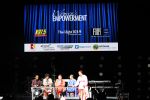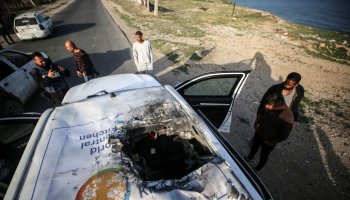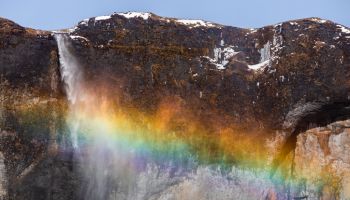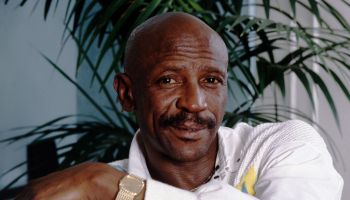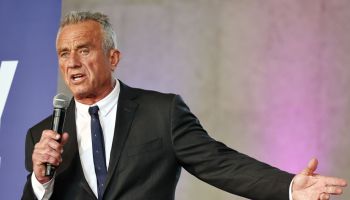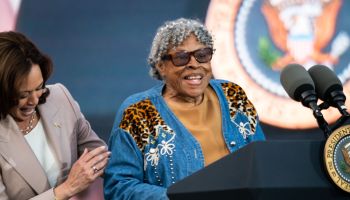CASABLANCA, Morocco – Arab women wearing traditional headscarves and silk veils over their faces walked barefoot around the towering marble-columned Hassan II Mosque, the 7th largest mosque on the planet where old-world architecture meets new-world technology in a grand Islamic structure that rises up from the Atlantic Ocean.
At the entrance of the mosque, through a huge horseshoe-shaped archway of ornate bronze and classic Arabic craftsmanship, we slipped off our shoes and wandered through the cavernous mosque of mile-high ceilings, Turkish-style swimming pools, an ablutions hall with more than 40 fountains, and a hand-carved dark-wood balcony where women go to pray separately from men.
The 21-year-old mosque is partially built over the Atlantic Ocean and features a 690-foot minaret that stands over the bustling city of Casablanca. One of world’s most high-tech mosques, it offers heated flooring, a retractable roof, and a section of clear-glass flooring for worshipers to kneel and pray over the ocean. Six thousand men working in 24-hour shifts built the mosque in six years at a cost of an estimated $800 million. The mosque can accommodate 105,000 worshippers.
I found myself mesmerized by the mosque while touring Morocco with 15 African American newspaper publishers representing The National Newspaper Publishers Association, (NNPA) a coalition that publishes 200 newspapers for an estimated 20 million readers.
We were invited to Morocco by the Moroccan government to learn about Arab culture, engage in discussion with Moroccan government officials, faith leaders, and scholars, and embrace our ancestral roots in an African country.
For black journalists visiting North Africa, Morocco is a place filled with adventure, a history that dates back 12 centuries, and scenery that sometimes bears no resemblance to Western culture. Two members of our delegation had visited Morocco before and several journalists were first-time visitors to Africa yet everyone appreciated the cultural connections: African Americans standing on African soil was poignant.
While the official language in Morocco is Arabic, Berber dialects, and French are often the languages of business, government, and diplomacy. Our interpreter, Saloua Bukraa, a charming Moroccan woman who speaks Arabic, Berber dialects, and fluent English, French and Spanish, embodies the contemporary Morocco with all its sophistication and cosmopolitan appeal.
Walking along the busy streets of Casablanca is a tale of two worlds where ancient Morocco intersects with Western culture. While some women are often covered in the traditional hijab, (headwraps) and older women are cover all parts of their bodies except their eyes, modern Moroccan women wear blue jeans, stylish leather jackets, and teenage boys hang on street corners talking on cell phones, texting, and listening to hip-hop music on their iPods.
A nation with 33 million people, Morocco is situated in North Africa, bordering the North Atlantic Ocean and the Mediterranean Sea, between Algeria and the annexed Western Sahara. A large part of Morocco is mountainous. The Atlas Mountains are located mainly in the center and the south of the country. The Rif Mountains are located in the North of the country.
African Americans Standing on African Soil: Voyage to Morocco (Part I) was originally published on blackamericaweb.com



